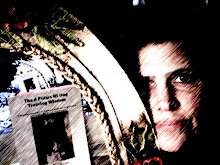
It's that time of year -- crunch time -- where I have to get in all my
CEU's to keep my independent social work license active. My own deadline for licensing renewal is May and I'm only 8 into a 30 hour requirement that I have 2 years to fulfill. So the flood of e-mail solicitations, not to mention pamphlets, brochures, postcards and letters coming through the snail mail way announcing locally based topics that help fulfill my requirements are taking on particular interest as February is fast fading into March. I try to select the topics that are of greatest interest or benefit for a person who is a dog trainer/behaviorist such as myself. (Let's be honest, location and cost also factor in).
Because of my background in social work with the emphasis on early childhood development AND emergency mental health crisis intervention and assessment, I get insight into dynamics with clients that segue into a realm of discussion that is less about dog training than problem solving with other, i.e., human relationships - spouses, partners, roommates, children, grandchildren, grandparents, neighbors, co workers, etc. Some of my clients, referred by previous clients, are probably bringing me in less about the dog than some other dynamic that couldn't be addressed in a more conventional way -- i.e., seeing a therapist.
Today I received an email solicitation for an upcoming conference that has appeal because it's online and the topic is on The Culture of
PTSD. It's relatively affordable, it's available as an audio download OR a CD, and I can choose to eat the food I have on hand that I like rather than hope the box lunch or buffet offers palatable options. And it's worth 9 credits, which could bring me up to 17 without leaving the house!
But more to the point, the topic of PTSD fascinates me in general and with dog clients specifically.
I would argue that dogs in a shelter environment are no different than Prisoners of War. The POW camp may be deluxe and the POW camp may be a pit stop to the gas chamber, but the residents are effectively sent there as prisoners. Previous owners may have abandoned or given up on them directly by bringing them in and paying to relinquish, or the dogs may have been thrown out of cars or abandoned in parks or just plain locked out and given up and thus picked up as strays and brought to a location that invariably includes being put in a cage.
The dog might be given a physical exam by a veterinarian and somewhere someone is going to assess the dog's suitability to be adopted and if the dog doesn't pass the test, the dog is generally euthanized. My friend Tracy Ann of
Zen Paws could certainly quote you the real numbers of dogs that are euthanized each day or you could just do a google or other search engine search for those stats.
The dogs we abandon, give up on, lose or otherwise fail by not meeting their needs can, if the situation is ripe, develop symptoms of PTSD. I'm fully for rehoming a dog who doesn't fit into a home -- I've talked before about people making impulse choices that result in a poor match between person and dog -- and this is a topic that merits a heck of a lot more than a blog post -- but if the recognition of trauma (that the dog perceived it as trauma is the key here, not our subjective opinion based on the traumatic incident) that leads to PTSD that leads to manifestations of behaviors of dogs that are either outwardly scary (i.e., aggressive displays such as barking, lunging, snapping or biting) or inwardly scary (i.e., a dog showing self mutilation as in biting or excessively licking him/herself to the point of injury), I'm here to argue that it is treatable.
The potential client who might find me through an indirect approach (not a former client or trusted vet referral) might be focussed on house training. But with a little bit of probing, it becomes clear to me that the problem the potential client is calling about is simply the tip of the iceburg - it's symptomatic of the bigger picture. It's addressing the bigger picture that is key to successful training.
By understanding temperament, known history, presenting problems and dynamic in the home (which can only be seen IN THE HOME), then an effective treatment and training plan can be implemented to help the problem. Even with dogs who suffered PTSD. And from my perspective, those are the most interesting cases clinically. Perhaps if there is interest, I'll start providing case studies to illustrate how training helps!
Now off to see if I can organize and plan for all my CEU's in a more timely way than last time (honestly I got my CEU's and license renewal info in the mail at 11:45 pm on the night of my deadline and I don't want to do that again!).







